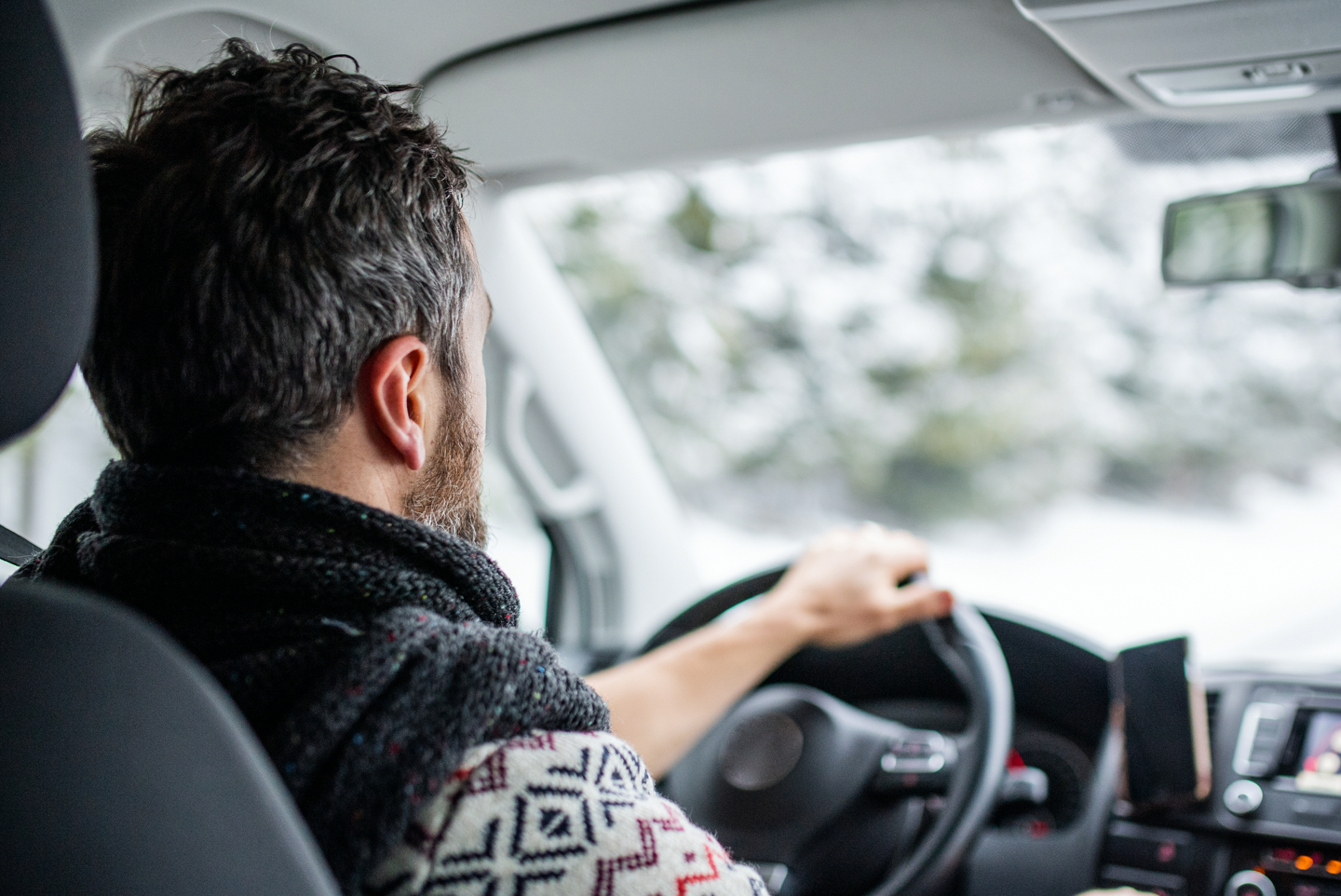Safety tips for driving in the rain
October 7, 2021
Let’s talk about rain and driving. Rain—that form of precipitation that gives your car an impromptu wash, lowers your visibility and makes you want to live out your favorite romance movie scene—also impacts road safety. According to the Federal Highway Administration, over a 10-year period, rain contributed to
46 percent of weather-related accidents.Sure, driving in the rain requires careful attention, but don’t let that number intimidate you. We’re going to assist you by providing some insight into the effect rain has on your driving, how you can be successful on the road during a rainstorm and share how having car insurance (like HiRoad) in these situations is a necessity.
Preparation is key for safe driving in the rain
Driving safely in the rain happens before you even hit the road. And although preparing for rain on the road isn’t like your weekly meal prep sessions, staying up-to-date with regular maintenance and tune-ups can be a great starting point to driving safely on the road all year.
Here are four safe driving tips from the National Highway Traffic Safety Administration (NHTSA) to put into practice before hitting the road:
Plan ahead by knowing your route/destination and weather conditions. In emergency situations, check local news stations for closures or evacuation routes
Check your tires and windshield wipers before embarking on a road trip to ensure your car is ready to tackle weather changes
Take stock and keep an emergency car kit inside your vehicle to plan for the unexpected
Have a full phone battery. Why? Having a full battery on your phone ensures that in the event of an emergency or accident you’re able to contact help and access your car insurance information when you need it the most.
If you have HiRoad insurance, you have access to everything in one location on our app—filing a claim, insurance cards and roadside assistance—right on your phone.
Know your limits
There’s a good chance that many of us haven’t experienced every possible weather scenario on the road, right? Some of us are just beginning to put miles behind our newly obtained driver’s license. Other folks may live in areas like Arizona that don’t necessarily get the precipitation like those who live in Washington get—making their experience of driving in severe weather more difficult and stressful.
A great first step is to address your own driving history by answering some basic questions. Have you driven in heavy rain before? Do you know how to react in situations like hydroplaning? Do you feel confident about driving in sudden weather changes?
There’s no wrong answer. Be OK with knowing your limitations on the road. If a heavy rainstorm is in the weather forecast for the day, opt to work-from-home (if possible) or carpool with someone who feels confident driving in the rain.
On the flip side, if you’re ready to take on mastering the art of driving in the rain, we’ve got some insight on how you can do just that.
How to drive in the rain, safely
First things first: take a deep breath. You’ve got this. By putting these nine driving in the rain safety tips from DefensiveDriving.org into practice, you’ll be ready to tackle the road ahead in the event of a downpour.
Turn off and never use cruise control during a storm or in wet conditions
Give yourself and the car in front of you some added space
Turn around and don’t drown in flooded areas, no matter how much you think your car can handle it
Drive in the middle lane if possible as water tends to pool in the outer lanes
Avoid sudden or abrupt movements—drive gently
Turn your lights on
Take things slow and reduce your speed during a rainstorm
Keep a firm grip on the wheel to have better control of your vehicle in the event of heavy rain and winds
If you feel unsafe, pull over and ride out the storm
By implementing these driving in the rain safety tips, you can have success during a downpour. Coincidentally, many of the tips for driving in the rain are what we reward you for at HiRoad. When you’re practicing Safe Speeds, Distraction Free, Smooth Driving and Driving Patterns on the road, you’re not only being safe—you’re getting rewarded in savings.
FAQs for driving in the rain
Here are some answers to three popular questions asked on the topic of driving in the rain:
How much slower should you drive in the rain?
When it’s raining cats and dogs outside, lower your speed by five to 10 miles per hour (MPH) until weather and road conditions improve.
What should you do if your car hydroplanes?
In the event you do find yourself losing control of your vehicle in a rainstorm (hydroplaning), do not slam on the brakes. As your car starts to skid and loses traction with the road, take your foot off the gas and start to auto-correct your steering. How do you do this?
Turn your steering wheel in the direction the car is sliding. For example, if the back of your car starts sliding right, turn your wheel to the right. As your car begins to straighten out, mirror that movement through the steering wheel. Once your car is completely straightened out, get to a safe place on the side of the road and take a moment to regroup.
Why is it dangerous to drive in the rain?
Let us count the ways. Driving in any extreme weather condition (excessive heat, snow, heavy winds, rain, etc) can certainly bring a higher level of risk. Knowing how to drive in the rain safely or any other type of extreme weather can prepare you for when the unexpected happens.
Can you drive fast in the rain?
As we touched on earlier, the worst thing you can probably do while driving in the rain is to speed. Speeding with water on the road increases your risk of losing control of your vehicle and causing an accident to yourself and/or others.
While you may feel rushed to get to the safety of your home, save any speeding for your favorite video game. Driving mindfully in
all weather conditions is what we’re about at HiRoad, and we think you should be too. Take things slow on the road—rain or shine.HiRoad has you covered in the worst of weather
Like the weather, there are just some things in life we don’t have control over. What can you control? How prepared you are for those unexpected rainfalls. With an emergency car kit, best practices for driving in the rain and reliable car insurance—you’re set.
At HiRoad, we work to ensure you have one less thing to worry about when you hit the road. Because when the unexpected happens, we’re there to help you feel a little less alone. With our roadside assistance coverage options and dedicated Customer Care team, we’ll work to get you back on the road safely or file a claim with ease. Contact us today to know more about our coverages and what we do to reward mindful drivers like you.
The information in this article was obtained from various sources not associated with HiRoad®. While we believe it to be reliable and accurate, we do not warrant the accuracy or reliability of the information. HiRoad is not responsible for, and does not endorse or approve, either implicitly or explicitly, the content of any third party sites that might be hyperlinked from this page. The information is not intended to replace manuals, instructions or information provided by a manufacturer or the advice of a qualified professional, or to affect coverage under any applicable insurance policy. These suggestions are not a complete list of every loss control measure. HiRoad makes no guarantees of results from use of this information.
Stay on the path
Get HiRoad in your inbox
Share your email to get the latest about our community of mindful drivers.



